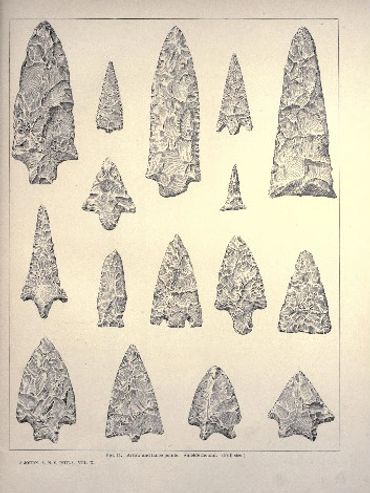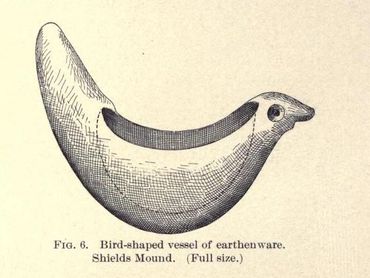History of Black Hammock Island
The University of North Florida has continued to uncover the ancient artifacts that are located on Cedar Point on Black Hammock Island by a group of Mocama Indians dating as far back as 1560. This leads us to belief that there were several indigenous groups of people who had lived there before any Europeans. The most recent artifacts do supply a time-line of the oldest pottery ever discovered which can be traced to 2500 BCE (Before Christian Era) and is believed to be a piece of an olive jar.
As of June, 2009 the UNF Archaeology Team and Students with the direction of Keith Ashley, Researcher at UNF archaeology lab is to learn more about the natives that inhabited the area since as long as 4000 B.C.
Most recently, 2011, University of North Florida recently decided to launch "People Pay To Work on UNF Archaeological Dig" for those amateurs and graduate students to continue the "dig" on Black Hammock Island which proved to be very successful as announced on July 13, 2011 as reported by Kate Howard with the Florida Times Union.
Professor Thunen at UNF is very confident that the artifacts that will be discovered will prove the Native American life before and after the Spanish Missionary period. There are definitive signs of an undiscovered area of Black Hammock Island that might support very important history that establishes on of the important 124 missions located in the southeastern between 1565- 1763 in the United States.
The Paleo Indians are known as the first humans to inhibit Florida after the last glacier period which occurred over 14,000 years ago. It is believed during the Wisconsin Glaciation Era the Paleo Indians migrated to North America from Siberia, Europe and Asia by way of the Bering Land Bridge or known as the Bering Strait which is located in present day Alaska.
"Certain River Mounds of Duval County, Florida"
Written by: Clarence B. Moore. Published in: 1895
An early archaeologist by the name of Clarence Moore first started his interest in archaeology evacuations on or around 1845. He actually began his research of the St. Johns River on 1-16-1895 through 6-16-1895 primarily on the shores of the St. Johns River and his credited for writing "Certain River Mounds of Duval County, Florida".
The Johnson Mound was 7’4" height and 65 feet in diameter, which was located ½ mile to the north from St. Charles Creek, a stream emptying into the St. Johns River just east of New Berlin.
They were able to record a skeleton in anatomical order, 3-4 sherds (pottery) with and without design, 3 arrowheads, one bit of mica, a small celt, conch shell, mussel shells used as a knife, several pebbles, and a tubular bead of copper. The 5" piece of copper appears to be an ornament which lay next to human bones. It was concluded that the Johnson Mound did not reveal any contact with white people.
The Shield Mound was located near "New Castle" and also described as a mound near Mill Cove which was 150 yards from the river’s bank. He was able to record approximately 150 human remains some of which were denude of the flesh.
The sherds were decorated with a design, 9 earthenware vessels shaped like a bird, a toy vessel, 2 tobacco pipes, 12 polished hatchets, a celt, a chisel made of clay, 114 arrowheads and lance points, tubes of natural formation, double bladed axe, boat shaped pendant, lower jaw of a bear, and turkey leg and spur.
The Broward Mound is located ¼ mile northwest of Cedar Creek Landing which was 8" tall and 60 feet in diameter. With the permission from Napoleon Broward, Jr., Esquire’s this mound was demolished for artifacts. During this evacuation human remains in 12 separate areas, 4 isolated skulls, femur bones, tibia bones, a single humerus, a pelvis, and a single vertebra. A few sherds were found, 5 polished hatchets, 1 arrowhead, and 1 pebble. The conclusion was there appears to be no evidence to support any contact with whites.
"Certain Sand Mounds of the St. Johns River, Florida by Clarence B. Moore "As to copper from the mounds of the St. Johns River, Florida". Written 1894
The copper found along the St. Johns River may have been derived from different locations such as Mexico, New Mexico or Arizona, a probability from Cuba; but with the entire group of artifacts, it is most likely the origin is from the Lake Superior region.
At the age of 40, Clarence B. Moore started his amateur archaeology expeditions on board of his steam powered paddle boat named "Gopher".
The Jacksonville Business Journal has been following the progress of all archaeological digs that have taken place in the North Florida area, reported by Tim Allen Gilmore on 11-23-1998 when he published his article "The Wonders of Nature” and the ghosts of history come together in the land of."
Keith Ashley, Professor of Archaeology at North Florida University has been researching in the northern part of Florida for quite some time. He has collaborated with several other known archaeologists, Chester B. DePrater, Rebecca Saunders, Gifford J. Waters, Mark Williams John E. Worth and Vicky Rolland.
On Black Hammock Island, they have discovered remnants of the second-oldest pottery in the United States, dating to 2500 B.C.E. which is also believed to slightly older finds in the Savannah River area.
"Excavations at the Cedar, point site (8DU81) on Black Hammock Island, northwest of San Juan del Puerto, have uncovered the suspected location of the transplanted mission of San Guenaventura de Guadalquini" (Thunen, 2006)."
"Support for dividing the Mississippian period of extreme northeastern Florida into the St. Johns II period, A.D. 900-1250."
Another important person who has been diligently exploring many of the artifacts that have been found in Northeast Florida is Vicki Rolland, who is currently a Professor at Flagler College in St. Augustine, Florida. She and other enthusiast researchers have collaborated together for several years which produced some very vital information that dates back to 900 AD.
During the 48th Annual Southeastern Archaeology Conference the discussion of "Mocama Pottery" was explained by Vicky Rolland which provides great detail on the artifacts found to be of the Late Archaic Period.
Professor Robert L. Thunen and Professor Keith Ashley have a previous working relationship and worked together to produce the Archaeological Survey and Testing of the Cedar Point Site (8DU81) for 2005, 2006 and 2007.



